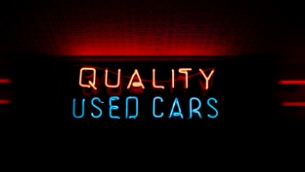Guiding You Through the Complexity of Accident Lawsuits

Navigating the legal aftermath of an automobile accident can be an intricate process fraught with challenges. Victims of car accidents often find themselves thrust into the world of accident lawsuits, a realm where the knowledge of statutes, insurance policies, and procedural norms is vital. An understanding of these elements is crucial in order to secure proper compensation for damages and injuries sustained. The litigation journey begins with the crucial step of establishing fault and proceeds with the meticulous documentation of losses for a convincing claim.
Understanding Accident Lawsuits
Accident lawsuits can be intricate, often involving the determination of fault, liability, and the pursuit of just compensation. They require a thorough understanding of personal injury law and a strategic gathering of evidence.
Legal Foundations and Liability
Motorcycle accidents often lead to lawsuits driven by the negligence principle under personal injury law. Negligence requires proving that someone's carelessness led to another's harm. In such cases, traffic laws and the statute of limitations are fundamental.
- Fault: Determines who is legally responsible.
- Liability: May be shared among parties, affecting compensation.
- Negligence: Includes breach of a duty of care resulting in injury.
- Personal Injury Law: Governs how damages are to be compensated.
- Statute of Limitations: Timeline within which a lawsuit must be filed.
Roles and Responsibilities
The plaintiff and defendant occupy central roles. The plaintiff, often represented by a personal injury attorney or a car accident attorney, files the lawsuit. Defendants, typically insured, rely on legal representation provided by insurance companies.
- Plaintiff: The injured party.
- Defendant: The party accused of causing the injury.
- Attorney: Legal representative handling the case.
- Insurance Companies: May be involved in settlement negotiations.
- Judge and Jury: Oversee the trial procedures and verdict.
Gathering and Managing Evidence
Effective evidence collection is pivotal for substantiating claims. This includes acquiring the police report, medical records, witness testimony, and possibly consulting expert witnesses for accident reconstruction.
- Evidence: Supports claims of liability and damages.
- Police Report: An initial evaluation of the accident scene.
- Medical Records: Document injuries and treatment.
- Witness Testimony: Provides accounts from those who observed the incident.
- Expert Witnesses: Offer specialized knowledge, e.g., in accident reconstruction.
Negotiations and Settlement
In accident lawsuits, the phase of negotiations and settlement can offer an alternative to a lengthy court trial by reaching an amicable agreement between the parties involved. This process requires skilled attorneys to navigate complex discussions concerning liability and compensation.
Conducting Effective Negotiations
To conduct effective negotiations, Tijerina Legal Group, PC leverages their expertise in personal injury claims. Their car accident attorneys lead the process by meticulously preparing each case, establishing the extent of injuries and damages incurred, and devising negotiation strategies. Key elements include:
- Assessment of Damages
- Detailed documentation of property and injury-related expenses.
- Computation of non-economic damages like pain and suffering.
- Liability Analysis
- Investigation to attribute negligence and determine liability.
- Examination of liability insurance and uninsured motorist coverage.
- Communication with Insurance Companies
- Interactions with the insurance adjuster to present the insurance claim.
- Dispute resolution techniques to challenge any low settlement offers.
Settlement Dynamics
Settlement discussions pivot on multiple dynamics where the objective is to arrive at a fair compensation without proceeding to trial. The insurance company plays a critical role, often making an initial offer that an experienced attorney can negotiate upwards.
Assessing Offers:
- Evaluation of the long-term impact of injuries.
- Comparison against similar car accident lawsuits.
- Potential jury verdict predictions influence settlement amounts.
- Attorneys use this as leverage during negotiations.
The Role of the Jury:
Alternatives to Court Proceedings
When direct negotiations reach an impasse, alternatives such as mediation and arbitration can be explored. These alternatives often save time and resources, while still involving crucial decision-makers.
- Mediation: A neutral third-party mediates the negotiation process, encouraging mutual concessions.
- Arbitration: A binding or non-binding arbitration where an arbitrator, akin to a judge in a civil court, renders a decision.
Image Source: Google Images










